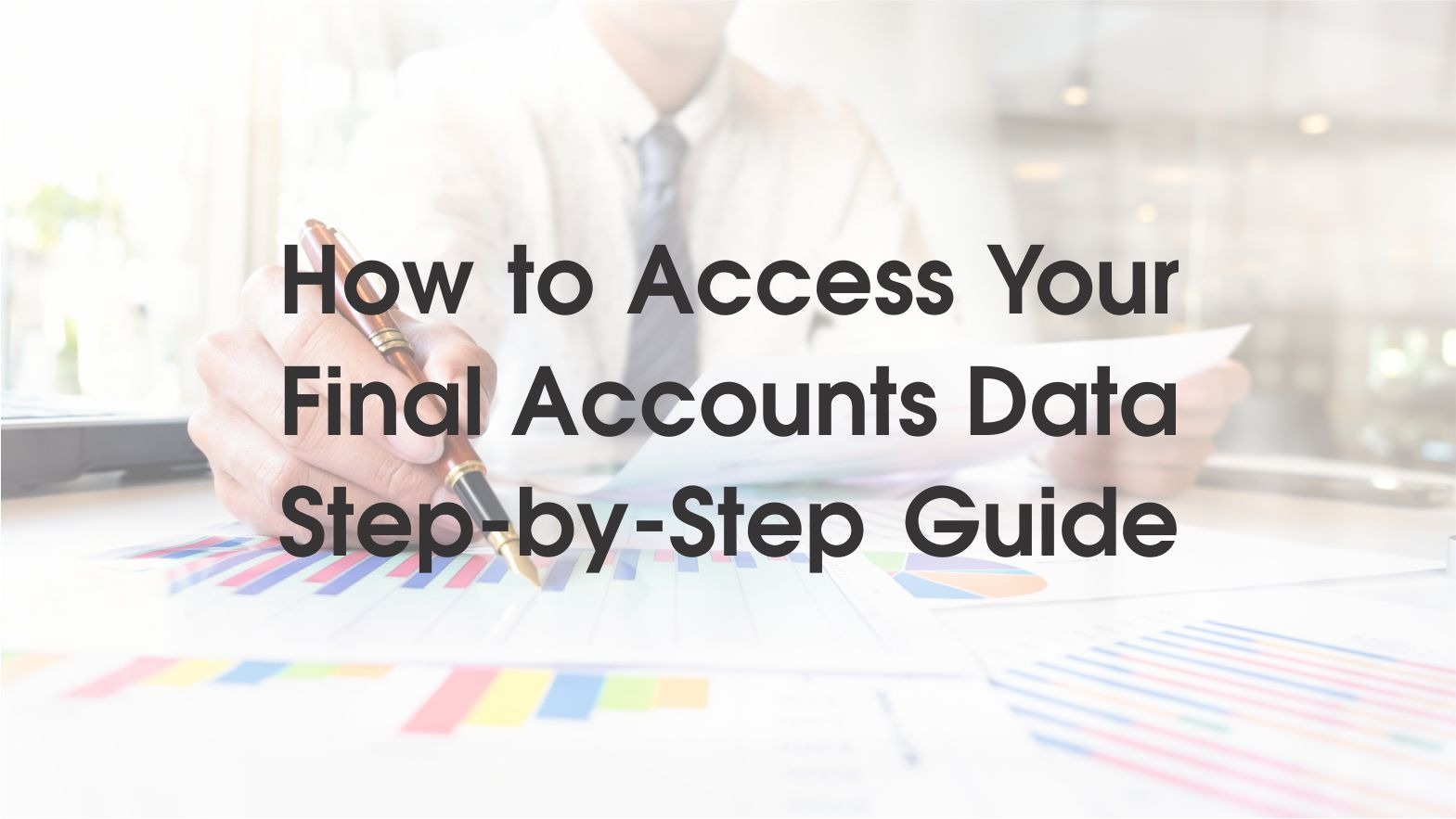How to Access Your Final Accounts Data? Step-by-Step Guide
Accessing your final accounts data is essential for any business owner or financial manager. Final accounts data refers to the financial records and reports that summarize a business’s financial performance and position for a specific period, usually a year. These records include the balance sheet, income statement, and cash flow statement.
Final accounts data plays a crucial role in determining the financial health of a business and is used to make informed decisions about its future. However, accessing this data can be challenging, especially for those unfamiliar with accounting procedures and terms.
This step-by-step guide will give you the essential information you need to access your final accounts data easily.
Step 1: Gather all financial records
The first step in accessing your final accounts data is to gather all your financial records, including invoices, receipts, bank statements, and any other financial documents that relate to your business’s financial performance and position. It is essential to ensure that all financial records are accurate and up-to-date.
Step 2: Organize your financial records
Once you have gathered all your financial records, the next step is to organize them in a manner that makes sense to you. You can use spreadsheets, accounting software, or manual ledgers to organize your financial records. Keeping your records in a way that is easy to access and update is vital.
Step 3: Determine the accounting period
The next step is to determine the accounting period for which you want to access your final accounts data. This period could be for a specific month, quarter, or year. It is crucial to ensure that the accounting period you choose is appropriate for your business.
Step 4: Prepare the balance sheet
The balance sheet is a financial statement that summarizes a business’s assets, liabilities, and equity as of a specific date. It provides an overview of the financial position of a business and is used to determine its solvency.
To prepare the balance sheet, you must list all your assets, liabilities, and equity in separate columns. Assets should include cash, accounts receivable, inventory, property, plant, and equipment, among others. Liabilities should include loans, accounts payable, and tax liabilities, among others. Equity should include retained earnings, capital contributions, and dividends, among others.
Step 5: Prepare the income statement
The income statement is a financial statement that summarizes the revenue and expenses of a business for a specific period. It provides an overview of the financial performance of a business and is used to determine its profitability.
To prepare the income statement, you need to list all your revenue and expenses in separate columns. Revenue should include sales, commissions, and interest, among others. Expenses should include items such as the cost of goods sold, salaries, rent, and utilities.
Step 6: Prepare the cash flow statement
The cash flow statement is a financial statement that summarizes the inflows and outflows of cash for a specific period. It provides an overview of the liquidity of a business and is used to determine its ability to meet its short-term obligations.
To prepare the cash flow statement, you need to list all your cash inflows and outflows in separate columns. Cash inflows should include sales, investment income, and loans, among others. Cash outflows should include items such as the cost of goods sold, salaries, rent, and utilities.
Step 7: Generate final accounts reports
Once your data is organized, generate the final accounts reports. Most accounting software will provide templates for the balance sheet, income statement, and cash flow statement. Fill in the data, and the software will generate the reports.
Step 8: Review and analyze the reports
Finally, review and analyze the reports. Look for trends, areas for improvement, and areas of concern. Use the information in the reports to make informed decisions about your business’s financial health.
Conclusion
Accessing finalization of accounts data is essential in managing your business’s finances. With the right tools and information, you can easily access this information and make informed decisions about your business’s future. Whether you’re a seasoned business owner or just starting, following these steps will help you efficiently access your final account data.




